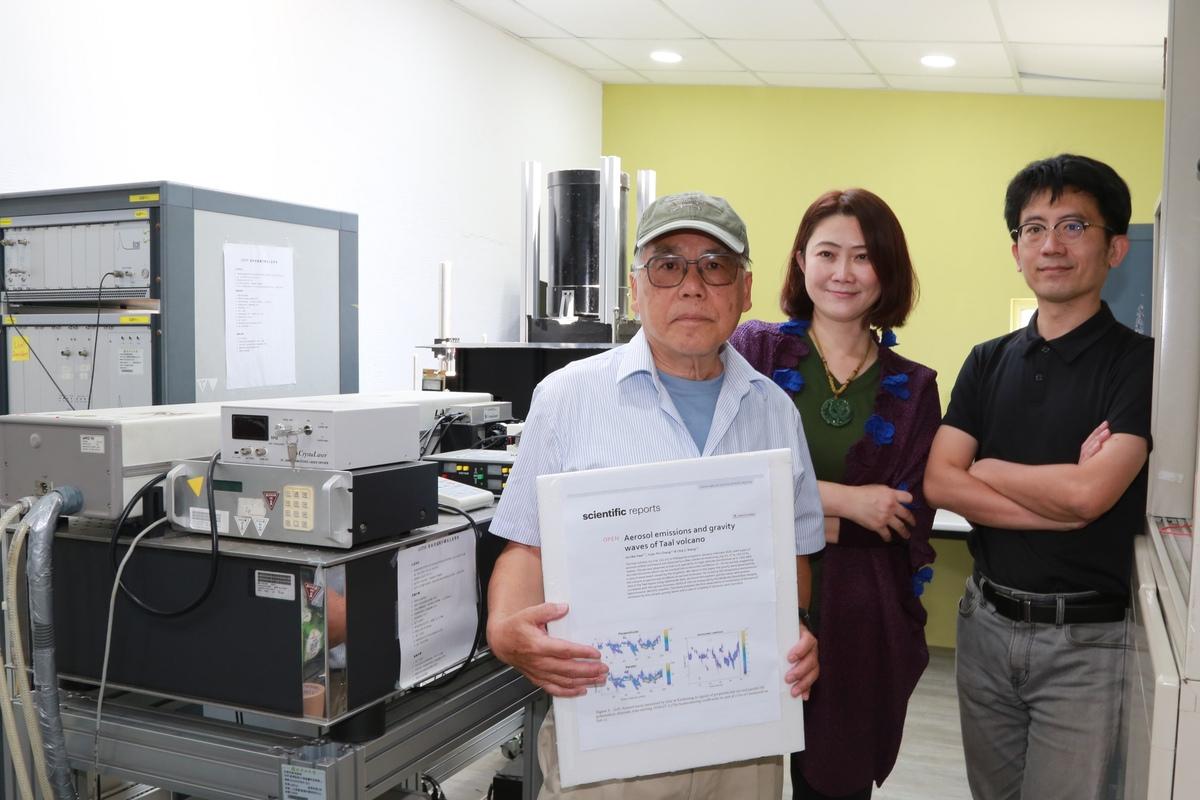
The world's first observation of atmospheric gravity waves affecting volcanic aerosol National Sun Yat-sen University research published in international journals
In recent years, earthquakes and volcanic eruptions on the earth have occurred from time to time in various places, which have had a major impact on the environment. Aerosol Science Research Center of National Sun Yat-sen University has observed two volcanic events using aerosol laser light-darkening telemetry. In 2020, the impact of atmospheric gravity waves caused by volcanic eruptions on the propagation and distribution of volcanic aerosols in the atmosphere was observed for the first time. In addition to new developments in understanding how geological activities affect atmospheric chemistry and physical mechanisms, this study also air pollution levels can be estimated through Lidar observations, and short-term warnings can be provided with weather simulations. The latest research results have been published in the international journal Scientific Report.
Aerosol are tiny particulate matter suspended in the atmosphere, and their sources are very diverse. In addition to man-made aerosol produced by human activities, such as PM2.5 with a particle size of less than 2.5 microns, nature itself also produces natural aerosol, such as ocean droplets aerosol or volcanic aerosol. Volcanic eruptions often release a large amount of carbon dioxide, sulfur dioxide and other gases and volcanic aerosols. These substances have far-reaching effects. They not only disturb the composition of the atmosphere, but also may affect the climate to cool the world (the so-called volcanic winter), and even some biological extinction. The eruption of Mount Vesuvius in Italy in AD 79 is a famous example.
Visiting professor Jan Bai Nee of the Aerosol Science Research Center at National Sun Yat-sen University, pointed out that in February 2020, a layer of aerosol at an altitude of 6 kilometers was observed by aerosol laser light, which attracted the attention of the research team. After tracking, it was found that these aerosol came from the Taal volcano in the Philippines and moved in from outside the country through atmospheric circulation. Taal Volcano, located on Luzon Island, is the second most active volcano in the Philippines, having recorded 33 eruptions since the 16th century. In mid-January 2020, Taal Volcano awoke and erupted, and the activity continued until the end of February. The volcanic eruption produced a large amount of smoke, lightning and volcanic aerosol erupted into the sky more than ten kilometers high, causing serious concern. Fortunately, the volcanic activity gradually ceased and did not cause serious damage, but the erupted material spread all over Southeast Asia, and a small part drifted to Taiwan, where it was observed by the research team over Kaohsiung.
The research team observed that the Taal volcanic aerosol has a 30-minute periodic fluctuation structure and found that the fluctuation is affected by the atmospheric gravity waves caused by the volcanic eruption. Volcanic eruptions not only cause changes in the environment and climate, but also produce atmospheric fluctuations, the so-called atmospheric gravity waves. "This is the first time in the world that aerosol suspended particles in the atmosphere have been observed, which are affected by atmospheric gravitational waves caused by volcanoes!" said Prof. Yuan-Pin Chang Department of Chemistry at National Sun Yat-sen University.
Atmospheric gravitational waves are disturbances caused by disturbances in the atmosphere. Sources include cloud convection, volcanoes, earthquakes, tsunamis, storms, and more. Gravity waves can reach the ionosphere upwards (100 km), and can be detected by precision barometers thousands of kilometers away, and can also be observed by ridar, rocket and satellite instruments, ground airglow meters and other high-level instruments and equipment. Atmospheric fluctuations caused by the recent eruption of the Tonga volcano in January 2022 have also been observed around the world.
Associate Professor Chia C. Wang, the Director of the Aerosol Science Research Center at National Sun Yat-sen University, emphasized that there are five major systems on the earth: the geosphere, the atmosphere, the hydrosphere, the biosphere and the cryosphere. In the past, these systems were often studied separately as independent systems. These different earth systems are quite closely linked through aerosols and influence each other. The research results published by the Sun Yat-Sen University team this time highlight the impact of geological activities on the spatial distribution, dynamic behavior and physical and chemical properties of aerosol suspended in the atmosphere. Variations in these aerosol properties can also lead to changes in cloud growth mechanisms and even climate change. In recent years, the earth's geological activities have been very active, and earthquakes and volcanic eruptions have occurred all over the world. In the past, there were not many related studies on the impact of geological activities on the atmosphere and aerosol chemistry. I hope this latest research can lead to new insight and attract more attention from all walks of life.

.jpg)


